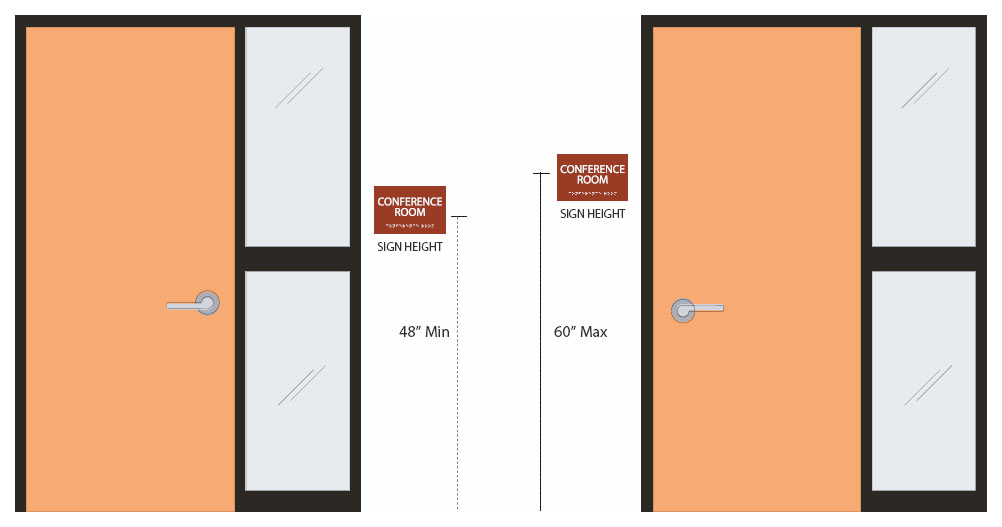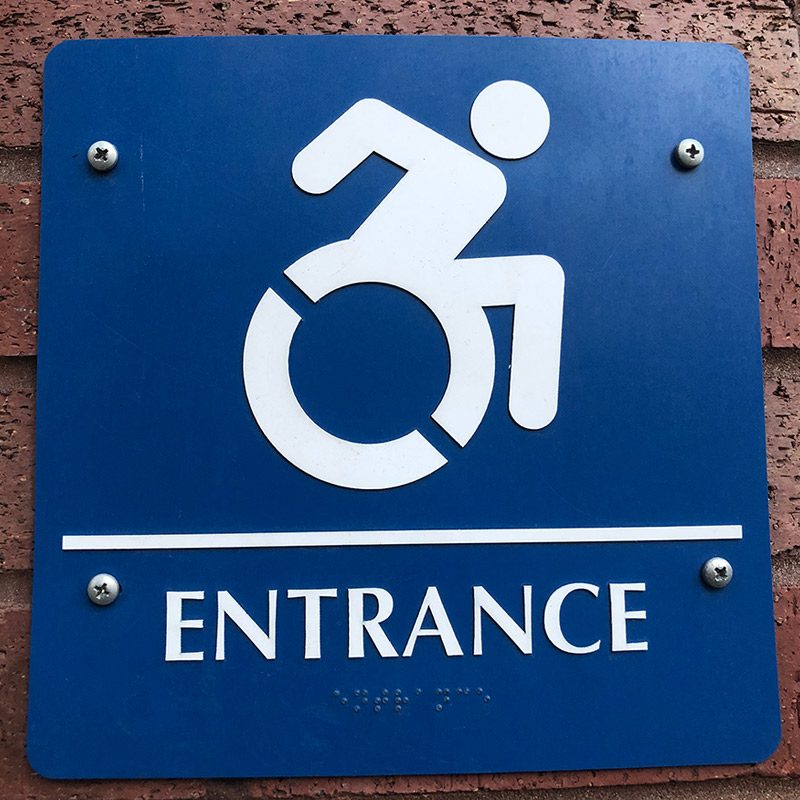Just How ADA Signs Improve Accessibility for Everyone
Exploring the Secret Functions of ADA Signs for Enhanced Availability
In the world of accessibility, ADA signs act as quiet yet effective allies, ensuring that spaces are navigable and comprehensive for individuals with handicaps. By incorporating Braille and tactile aspects, these indications break obstacles for the aesthetically impaired, while high-contrast color pattern and readable fonts cater to varied visual needs. Their strategic positioning is not arbitrary but instead a calculated effort to promote seamless navigation. Yet, past these functions lies a much deeper story regarding the advancement of inclusivity and the continuous commitment to creating fair areas. What a lot more could these signs represent in our search of universal availability?
Relevance of ADA Compliance
Making certain compliance with the Americans with Disabilities Act (ADA) is critical for promoting inclusivity and equal accessibility in public spaces and work environments. The ADA, passed in 1990, mandates that all public centers, employers, and transportation solutions suit individuals with handicaps, ensuring they take pleasure in the very same rights and chances as others. Conformity with ADA standards not only meets lawful responsibilities however also improves a company's online reputation by demonstrating its commitment to variety and inclusivity.
One of the vital facets of ADA compliance is the application of easily accessible signs. ADA signs are developed to make sure that individuals with handicaps can easily navigate with structures and rooms. These indications have to abide by details standards regarding size, font, color contrast, and placement to ensure presence and readability for all. Correctly carried out ADA signs aids remove obstacles that individuals with handicaps typically come across, consequently promoting their freedom and confidence (ADA Signs).
In addition, sticking to ADA regulations can minimize the danger of legal effects and prospective fines. Organizations that stop working to follow ADA standards may encounter fines or claims, which can be both damaging and monetarily troublesome to their public image. Therefore, ADA compliance is integral to cultivating a fair environment for every person.
Braille and Tactile Elements
The consolidation of Braille and responsive components right into ADA signage embodies the concepts of access and inclusivity. It is generally put underneath the equivalent message on signs to ensure that individuals can access the information without visual support.
Responsive aspects prolong beyond Braille and include raised signs and personalities. These elements are created to be noticeable by touch, permitting people to determine room numbers, washrooms, exits, and other critical areas. The ADA establishes details standards relating to the size, spacing, and placement of these responsive aspects to optimize readability and ensure consistency throughout various atmospheres.

High-Contrast Color Design
High-contrast color design play a critical role in boosting the exposure and readability of ADA signs for people with visual problems. These schemes are essential as they take full advantage of the difference in light reflectance in between message and background, ensuring that indications are easily noticeable, even from a distance. The Americans with Disabilities Act (ADA) mandates using certain color contrasts to why not try this out suit those with restricted vision, making it an essential facet of conformity.
The efficacy of high-contrast shades depends on their capacity to stand out in numerous illumination conditions, consisting of dimly lit environments and locations with glare. Generally, dark message on a light background or light message on a useful content dark background is used to achieve optimum comparison. As an example, black text on a white or yellow history provides a stark aesthetic distinction that assists in fast acknowledgment and understanding.

Legible Fonts and Text Dimension
When considering the design of ADA signs, the selection of readable font styles and proper text size can not be overemphasized. The Americans with Disabilities Act (ADA) mandates that typefaces need to be not italic and sans-serif, oblique, manuscript, extremely decorative, or of uncommon form.
The dimension of the message likewise plays a critical role in accessibility. According to ADA standards, the minimal text elevation need to be 5/8 inch, and it must enhance proportionally with viewing range. This is particularly essential in public spaces where signage demands to be checked out quickly and properly. Uniformity in text dimension adds to a cohesive aesthetic experience, helping people in browsing settings successfully.
In addition, spacing between lines and letters is essential to legibility. Appropriate spacing prevents personalities from appearing crowded, improving readability. By sticking to these standards, developers can considerably boost availability, ensuring that signage offers its intended function for all people, despite their aesthetic capabilities.
Efficient Positioning Techniques
Strategic positioning of ADA signage is necessary for optimizing accessibility and making certain compliance with legal criteria. Correctly located signs direct people with handicaps efficiently, promoting navigation in public areas. Secret factors to consider include visibility, proximity, and height. ADA guidelines state that indicators should be mounted at a height in between 48 to 60 inches from the ground to guarantee they are within the line of sight for both standing and seated individuals. This conventional elevation array his explanation is crucial for inclusivity, making it possible for mobility device individuals and individuals of varying heights to access details effortlessly.
Additionally, indicators should be placed nearby to the latch side of doors to permit simple recognition before access. Consistency in sign positioning throughout a facility improves predictability, decreasing complication and enhancing overall individual experience.

Verdict
ADA signs play a crucial duty in promoting availability by incorporating features that attend to the demands of individuals with specials needs. Including Braille and tactile elements makes sure critical information is easily accessible to the aesthetically impaired, while high-contrast color design and readable sans-serif typefaces enhance visibility across different illumination problems. Reliable positioning strategies, such as suitable installing elevations and critical areas, further help with navigation. These aspects jointly promote a comprehensive setting, emphasizing the relevance of ADA conformity in ensuring equal access for all.
In the realm of accessibility, ADA signs offer as quiet yet effective allies, making sure that areas are inclusive and navigable for individuals with handicaps. The ADA, passed in 1990, mandates that all public centers, employers, and transportation solutions accommodate individuals with impairments, ensuring they enjoy the very same legal rights and opportunities as others. ADA Signs. ADA indicators are made to make sure that individuals with handicaps can quickly navigate via spaces and structures. ADA guidelines specify that indications should be placed at a height in between 48 to 60 inches from the ground to ensure they are within the line of view for both standing and seated individuals.ADA signs play a crucial role in advertising ease of access by incorporating functions that resolve the requirements of people with specials needs